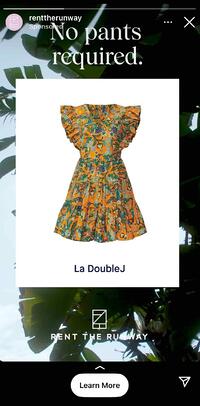Do you remember in 2012 when Mark Zuckerberg bought Instagram for $1 billion? It was a gamble. At the time of the acquisition, the platform was valued at half the purchase price, had 30 million users, and wasn’t generating revenue. Six years after the acquisition, Bloomberg estimated Instagram at 100 times that.
Today, the platform has over 1 billion active users worldwide with diverse demographics, behaviors, interests, and habits — making it prime territory for targeted advertising.
Instagram advertising is a fascinating process that involves competition, calculation, capital, and strategy. Let’s discuss how these factors influence costs, so you can decide how to implement Instagram advertising into your overall budget spend this year.
Advertising on Instagram can be an accurate and effective way of reaching the right prospects at various stages in their buyer’s journeys. If done right, your business can leverage the platform to generate interest in your products or services and turn users into customers.

But, how should you approach placing ads on the platform? What should your budget look like? And who should you be targeting?
You’ll need to answer those questions before launching your campaign. But before you approach any of them, you have to understand how the platform calculates advertising costs.
How are Instagram ad costs determined?
Instagram ads are bought on an auction bidding system that ultimately dictates their prices. An advertiser starts by establishing their campaign budget and submitting a bid.
Budgets are exactly what they sound like — the total amount of money a company is willing to allocate for an entire campaign. A budget is structured either on a daily basis or by the total cost of a campaign lifecycle.
Bids are the maximum amount of money a company is willing to spend on each user that completes the ad objective. That objective could include anything from viewing a video to clicking on a website link to downloading a mobile application.
 Ultimately, objectives always revolve around improving brand awareness, driving consideration, or converting potential leads.
Ultimately, objectives always revolve around improving brand awareness, driving consideration, or converting potential leads.
In an auction, Instagram determines which advertisement will create the most value for its users and selects a winner on that basis. That value is established by three primary factors:
- The advertiser’s bid amount
- How likely a user is to complete the specific action the ad is optimized for, otherwise known as estimated action rates
- How likely a user is to be interested in the ad itself, otherwise known as ad quality and relevance
As the winner, you get to place your ad in the space your competitors were vying for. You are charged on a cost-per-click (CPC) basis, and your ads remain live until your budget runs out. During your campaign, you can track your campaign performance using an analytics tool, like HubSpot’s Ads Software tool.
The amount of money it takes to win that auction will depend on the demographics you’re targeting, time constraints, and strategic placement within the app. More on that in the following section.
What can make Instagram ad costs vary?
Age Range
It’s no secret that Generation Z’ers, millennials, and boomers probably will engage with your ads in completely different ways. A clothing brand selling pleated khakis and golf shirts will likely perform better with mature prospects watching PGA Tour videos than 13-year-olds scrolling through SpongeBob memes.
 Additionally, users in different age brackets have varying online behaviors, with some spending much more time than others on social media. This means that certain age ranges will be more lucrative and, in turn, more competitive for Instagram ad placements.
Additionally, users in different age brackets have varying online behaviors, with some spending much more time than others on social media. This means that certain age ranges will be more lucrative and, in turn, more competitive for Instagram ad placements.
Timeframe
Instagram ad prices fluctuate based on the time of day, day of the week, and time of year.
When posting on the timeline or on stories, brands take into account the days and times, as that has an impact on how the content performs. Unsurprisingly, advertising prices also consider user activity and fluctuate prices based on this.
Cost-per-click can also shift as the year progresses.
With each season comes different spending habits along with the rise and fall of certain brands’ popularity. For instance, air conditioning companies likely garner more interest in the summer months than they do in the dead of winter.
On that same token, it may cost more to advertise in the weeks leading up to Christmas and Black Friday compared to other weeks in the year.
Consumer interests and habits change with the seasons — and Instagram ad costs typically follow suit.
Gender
As of 2021, 50.8 % of Instagram users identify as female, while 49.2% identify as male. Though that difference may seem unremarkable, it can have some meaningful implications on how much Instagram ads cost. Remember — over a billion people use the application, so a 1.6% discrepancy isn’t trivial.
 That difference — among other factors – can account for slight cost discrepancies between Instagram ads targeting women and those targeting men. Though the gap in cost-per-click for men and women might be as small as a few cents, that can add up to dollars quickly.
That difference — among other factors – can account for slight cost discrepancies between Instagram ads targeting women and those targeting men. Though the gap in cost-per-click for men and women might be as small as a few cents, that can add up to dollars quickly.
Ad Placement
The placement and advertisement type within the platform impact your ad’s cost-per-click. Ads in Instagram stories tend to be less expensive than feed placements.
However, some experts — including HubSpot Senior Marketing Manager Jillian Hope — suggest designing unique ads for both stories and feed placements to get the most efficient results for your budget.
Ultimately, paying fair prices to reach your targeted users takes some finesse. There’s no definitive answer to how much Instagram ads cost, as multiple elements play a role.
So while you’ll never know exactly how much your Instagram ads will cost, you should understand the factors that could shape the way you advertise and build your advertising strategy around them.
![]()

![New Data: Instagram Engagement Report [2021 Version]](https://i4lead.com/wp-content/uploads/2021/05/9294dd33-9827-4b39-8fc2-b7fbece7fdb9.png)
